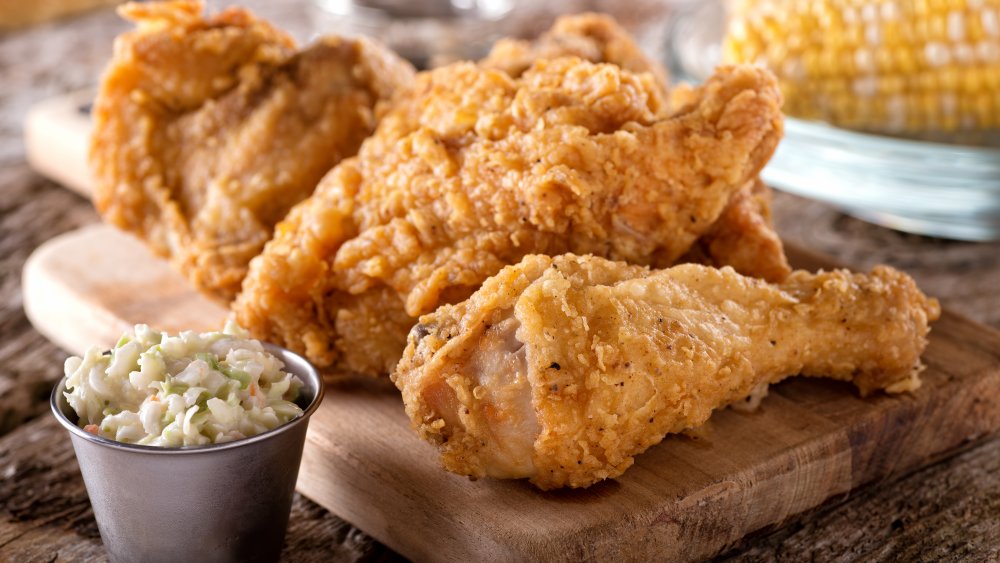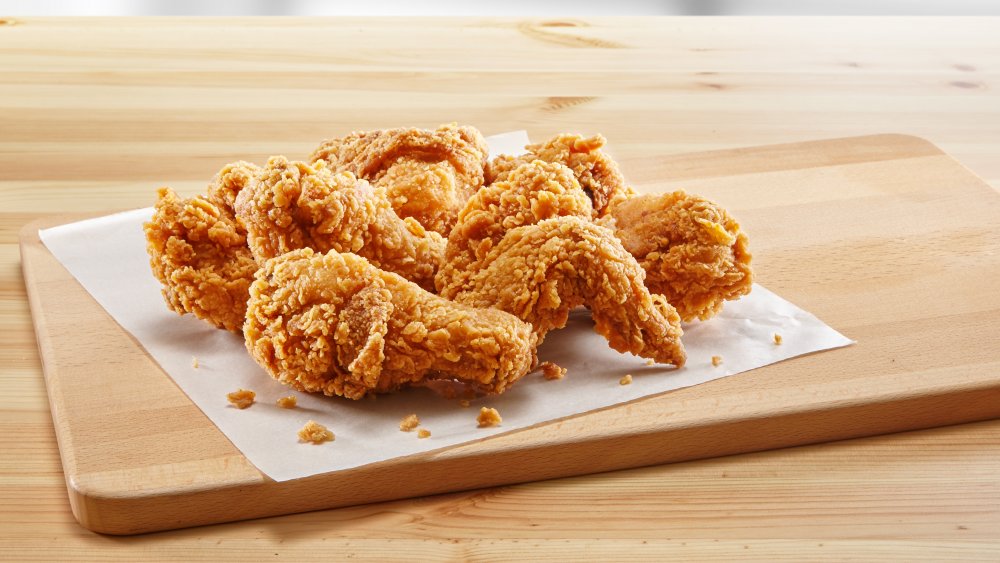The Real Reason Your Fried Chicken Is Turning Out Soggy
Frying chicken is labor-intensive, messy, and has the potential to be dangerous — last year, a grease fire sparked by an attempt at fried chicken burned down a house in Ann Arbor, Michigan (via Michigan Live). If you're going to jump through all of the hoops to make your own fried chicken, it's extremely disappointing for the finished product to come out in any way other than perfect. One of the most comment complaints when it comes to fried chicken is that it turns out soggy.
The best way to avoid fried chicken getting soggy is to ensure that you're not crowding the fryer (via All Recipes). As with most fried foods, chicken is best done in batches. If you put too many pieces of chicken in the pot at once, the temperature of the oil drops. The optimal temperature for the oil in which chicken is fried is around 350 degrees, but chicken from the refrigerator can cause that temperature sweet spot to drop. This, in turn, causes more oil to be absorbed by the batter, resulting in a soggy piece of chicken once you remove it from the fryer.
Two more pitfalls to avoid
Don't think that just because you're frying in batches that the first batch will be cold long before anyone can enjoy it. You can keep batches of chicken in the oven at around 200 degrees while remaining batches still need to be fried. There are a couple of things to do to prevent soggy fried chicken. One thing to be aware of is that using too much flour in the batter can result in a wet and soggy crust.
Another potential culprit is the paper towel that many people use to drain the excess oil once the fried chicken is done. While it seems logical that less oil will crisp up the chicken at the end, the hot oil draining into the paper can actually create steam which will cause the opposite of the intended effect. If you still want to drain your chicken without running into this problem, consider using a wire rack over aluminum foil or a baking pan (via Bon Appetit).

